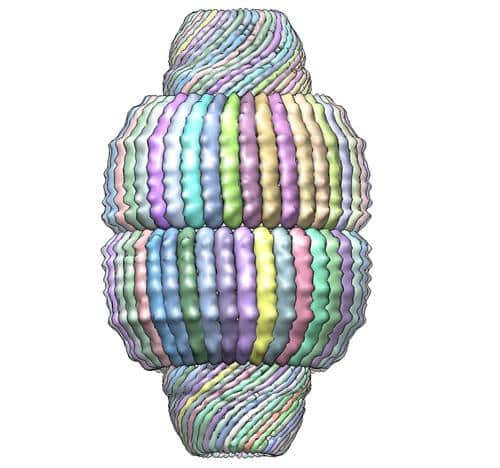 Evolution
Evolution
 Intelligent Design
Intelligent Design
Why Knockouts and Deletions Are Insufficient for Inferring Function — The Mystery of Cell “Vaults”

The other day, UPS brought me a copy of Larry Moran’s new book, What’s in Your Genome: 90% of Your Genome Is Junk (University of Toronto Press). Moran, an emeritus professor of biochemistry at the U. of Toronto, is a well-known opponent of intelligent design (but also a friendly acquaintance of some ID proponents, including me; Moran and I met in person at the 2016 Royal Society meeting on the extended evolutionary synthesis). In his new book, much of which has appeared previously in slightly different form on his blog Sandwalk, Moran argues that “functional DNA is any stretch of DNA whose deletion from the genome would reduce the fitness of the individual” (p. 98).
Moran puts this definition in bold font, so the reader can’t miss it. I appreciate that, as it makes his argument easier to follow. But I wonder how Moran would respond to the long-standing mystery of cell “vaults.” This is a vault:

Striking structure, right? And widely conserved in eukaryotic cells. Vaults are big; according to the Wikipedia entry, three times the size of ribosomes.
Not Well Understood
The Wiki entry also reports that the function of vaults is not well understood. Most importantly, as a direct challenge to Moran’s definition of “function,” knockouts of the major vault proteins in mice showed no phenotype.
Does that mean vaults have no functional role? Of course not. Fitness is always determined relative to some background. Not showing a phenotype (for instance, when a gene is deleted) does not equal “no function.” Likewise, our analytical difficulties about finding the right fitness background to assess possible vault functions says nothing about whether vault functions exist.
My favorite non-biological example of the trickiness of assessing function against a fitness measure or system background comes from Jules Verne’s novel Around the World in Eighty Days. Phileas Fogg has purchased the steamship Henrietta from its captain, as Fogg is crossing the Atlantic, so that he can burn all the non-essential materials on the ship to feed its steam boiler and engine. The 1956 movie version shows the Henrietta with much of its decking and cladding, etc., removed to serve as fuel.
Now an observer whose fitness background for steamships is limited to “transport from point A to point B” might mistakenly infer that the removed materials served no function. But that would be nonsense.
